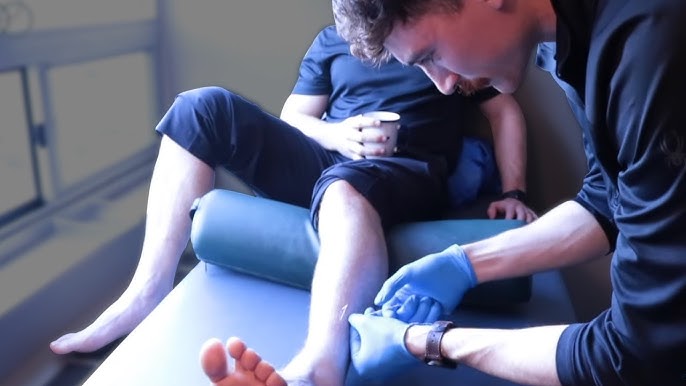An ankle sprain is among the most frequent injuries experienced by athletes. It is caused by excessive twisting or rolling of the ankle that overstretches or tears the supporting ligaments. These injuries can lead to significant pain, swelling, and instability, impacting athletic performance and daily activities. Let’s explore practical prevention and recovery methods.
How to Prevent an Ankle Sprain
Preventing an ankle sprain requires a combination of targeted exercises, appropriate gear, and preparation. Consistent balance and proprioception exercises may improve joint stability, response, and train your body to adapt better to uneven surfaces and unexpected movements. Proper warm-up routines play a fundamental role in reducing the risk of injury. Dynamic stretches and light cardio help prepare the muscles, ligaments, and tendons for physical activity. Also, using supportive athletic footwear designed for your respective sport helps stabilize the foot and ankle.
Strength training is another helpful technique to build the muscles surrounding the ankle joint. Strengthened muscles offer greater protection to the ligaments during high-impact activities. External support, such as ankle braces or taping, can also improve stability, particularly during games or routines that involve rapid directional changes.
Steps to Recover from an Ankle Sprain
Recovering from an ankle injury requires proper exercises to restore strength, flexibility, and mobility. A grade-specific approach is helpful based on the severity of the injury. Begin with simple range-of-motion activities, such as alphabet tracing. This involves using your toe to trace the letters of the alphabet, which helps improve joint mobility. Progress to calf raises to strengthen the calf muscles, providing extra support to the ankle.
Balance exercises using a balance board enhance stability and proprioception. This extra stability reduces the likelihood of re-injury. Resistance band exercises further strengthen the ankle joint. Walking is another key recovery step. Gradually increase the distance and pace as your pain decreases. This slow transition from limited to full mobility aids proper healing without overloading the joint.
Severity Levels of Ankle Sprains
Different severity levels of ankle injuries require varied treatment approaches.
- Grade One
Grade one sprains involve minor stretching or tearing of the ligament. Symptoms include mild inflammation, tenderness, and slight swelling. Most individuals with this level of sprain can walk with minimal pain and recover quickly with rest and targeted exercises.
- Grade Two
Grade two sprains occur when the ligament is partially torn. This results in moderate pain, swelling, and bruising around the ankle. Though the ankle remains relatively stable, walking can be painful. Recovery often necessitates a combination of exercises and external support to restore strength and function.
- Grade Three
A Grade three sprain is classified as a complete tear of the ligament. This leads to significant swelling, bruising, and severe pain. Walking is often highly uncomfortable or impossible. Recovery involves a longer timeframe, supervised exercises, and advanced stabilization techniques to promote proper healing.
Discover Ankle Sprain Treatment Options
Prevention and recovery strategies can significantly reduce the impact of an ankle injury on your performance and daily activities. Balance exercises, proper footwear, and a comprehensive recovery plan enhance resilience and long-term joint health. For more support for treating or managing an ankle sprain, explore detailed treatment options or consult a specialist for personalized guidance.

